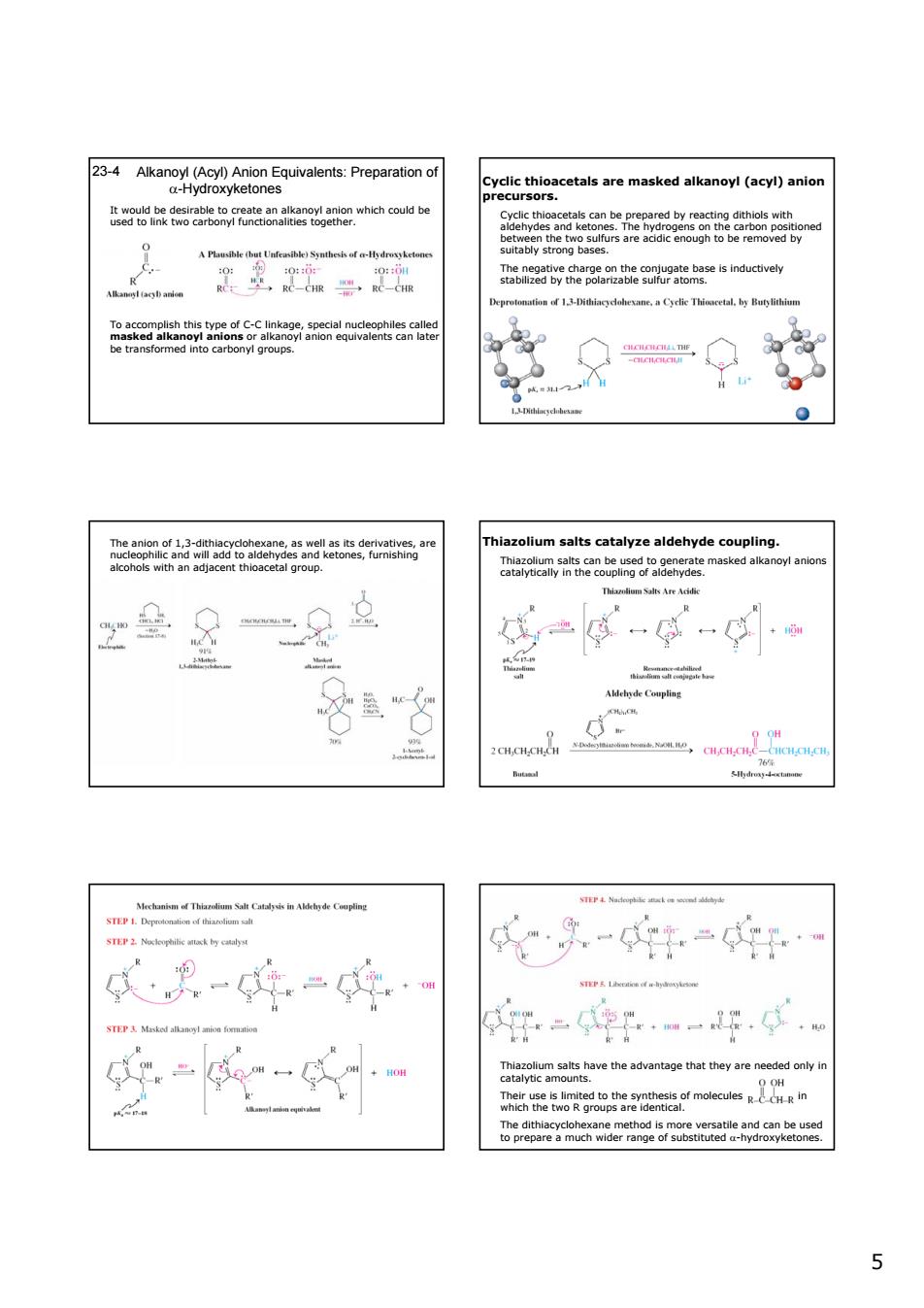正在加载图片...

Cyclic thioacetals are masked alkanoyl(acyl)anion asobtaehooaaonaeeathamhhout 1知3 N-kkstclehetame Thiazolium aldehyde coupling catacthe nof .d.d.. *0 Tvethentath theyaredd nly theof molecules ea2heneenemtednkeoe 5 5 Alkanoyl (Acyl) Anion Equivalents: Preparation of α-Hydroxyketones 23-4 It would be desirable to create an alkanoyl anion which could be used to link two carbonyl functionalities together. To accomplish this type of C-C linkage, special nucleophiles called masked alkanoyl anions or alkanoyl anion equivalents can later be transformed into carbonyl groups. Cyclic thioacetals are masked alkanoyl (acyl) anion precursors. Cyclic thioacetals can be prepared by reacting dithiols with aldehydes and ketones. The hydrogens on the carbon positioned between the two sulfurs are acidic enough to be removed by suitably strong bases. The negative charge on the conjugate base is inductively stabilized by the polarizable sulfur atoms. The anion of 1,3-dithiacyclohexane, as well as its derivatives, are nucleophilic and will add to aldehydes and ketones, furnishing alcohols with an adjacent thioacetal group. Thiazolium salts catalyze aldehyde coupling. Thiazolium salts can be used to generate masked alkanoyl anions catalytically in the coupling of aldehydes. Thiazolium salts have the advantage that they are needed only in catalytic amounts. Their use is limited to the synthesis of molecules in which the two R groups are identical. The dithiacyclohexane method is more versatile and can be used to prepare a much wider range of substituted α-hydroxyketones